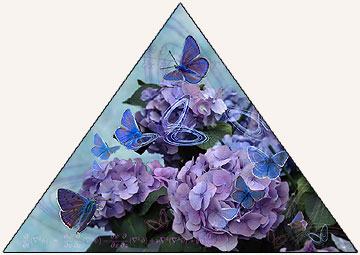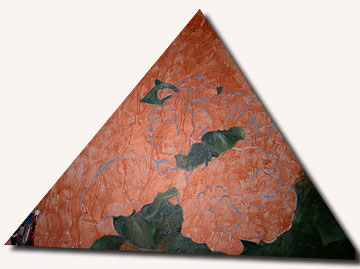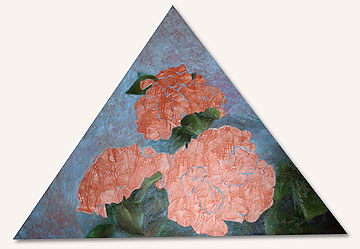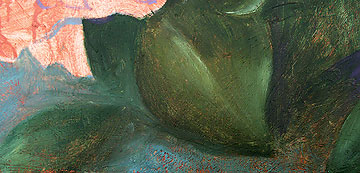|
| Painting
After the Technique of the Masters |
 |
I
go everywhere with my digital camera. Sometimes an image
I see will inspire a painting, sometimes it is the other
way around. With this painting I have a finished image
in mind and seek out the appropriate reference images.
The hydrangea flowers are my photographs and the Lorenz
attractor is a screen shot from a fractal applet. The
reference image evolves as the painting progresses. I
intend to add an abundance of butterflies. If you look
closely, two are morphing from the hydrangea petals already.
Many will fly free.
I compose my painting sketch in the almighty Photoshop, adjusting the composition
and elements until the image is at it's strongest. |
|
 |
As
promised, I've added my envisioned butterflies to my
reference sketch. They are morphing (flying) free
of the hydrangea petals, eventually to shapeshift again
into the Lorenz attractor. Very simply put, the
line drawing is a graph of a mathematical
formula which
'predicts' the probable outcome of a chaotic system.
Title: Butterfly
Effect (Chaos Theory)
An order so embedded in life that at first it appears
to be chaos. Fluctuations in the DNA sequence and, in
time, the butterfly diverges from a flower petal. See
the beauty of apparent randomness as that butterfly flies
from the flower, flapping its wings - the ripple effect
of which can cause a hurricane miles away.
|
|
 |
Now
for the actual painting.
After constructing the frame from 2"x2" douglas fir, stretching
and priming the canvas, I cover the canvas in a neutral wash of mineral
spirits and oil paint.
After the wash has dried, I sketch the basic outlines (in blue paint) for
scale reference. Then, begin quickly blocking in the background and foreground
leaves. |
|
 |

Blending the negative space into the leaves... |
|
|
|
|
|








